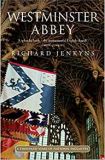Westminster Abbey: A Thousand Years of National Pageantry by Richard Jenkyns
| Westminster Abbey: A Thousand Years of National Pageantry by Richard Jenkyns | |
|
| |
| Category: History | |
| Reviewer: John Van der Kiste | |
| Summary: A concise history of the building sometimes regarded as Britain's national church, founded in the 11th century, scene of royal weddings, funerals, coronations, and final resting place of many illustrious figures. | |
| Buy? Yes | Borrow? Yes |
| Pages: 224 | Date: March 2011 |
| Publisher: Profile | |
| External links: Author's website | |
| ISBN: 978-1846685347 | |
|
| |
Few if any buildings in Britain personify history, and are steeped in so much, as Westminster Abbey. As the author says in his introduction, it is the most complex church in the world in terms of not only history but also functions and memories, perhaps the most complex building of any kind. In this compact paperback history, an updated edition of a hardback first published in 2004, he tells the story very readably from its foundation by Edward the Confessor in the 11th century to the preparations for the wedding of Kate Middleton and Prince William in 2011.
Ten chapters take us chronologically through the history and architecture of this 'royal peculiar', designated thus as the clergy and ecclesiastical hierarchy of the abbey fall outside the standard patterns of the church, and under the direct jurisdiction of the monarch. It has been a cathedral church, a coronation church, and the national church, the home of the Poets' Corner, the tomb of the Unknown Warrior, and the shrine of a Roman saint.
Its history has encompassed some interesting contrasts of the ancient and the modern world. The tomb of Sir Robert Peel bears his effigy clad in a Roman toga, while those of Disraeli and Gladstone, only a generation or so later, are in academic or chivalric address. There are facts a-plenty about coronations. The shortlived Edward VI was the first Protestant monarch crowned there and his successor and half-sister, the Catholic Mary, refused to sit in the same chair on the grounds that he had been a heretic. The Earl Marshal apologised to George III for various mistakes in the ceremony, assuring him that everything would be better at the next one, overlooking the fact that the young King surely had no desire for anybody to anticipate 'the next one'. Maybe it was just as well, for that next one would be long remembered as the occasion on which the about-to-be-crowned monarch, George IV, gave his guards orders to turn away his wife Caroline, the Queen whom he had tried to divorce and spectacularly failed.
In more recent years, two Prime Ministers have sought to use the abbey for political advantage. John Major returned the long-coveted Stone of Scone to Scotland, apparently hoping in vain that it might save a few parliamentary seats north of the border at the subsequent election. If this was the case, his bid failed spectacularly. A year later, Tony Blair defied all constitutional precedent by reading a lesson at the funeral of Diana, Princess of Wales, and a few years later his office pressed for him to have an enhanced role in the obsequies for Queen Elizabeth, the Queen Mother, a fact denied at the time yet later proved to be true.
There is however more to the Abbey than the events which have taken place within its precincts. Within these pages is an admirably concise account of how the architecture has evolved throughout the Renaissance, Reformation, Baroque and Victorian eras. Relevant poems are quoted, too, among them a sonnet by Thomas Bastard, published in 1598, and more contemporary verse from Sir John Betjeman. Jenkyns also allows himself one or two personal observations, such as his belief that it is something of a scandal that heavy traffic still thunders daily between the Abbey and the Houses of Parliament, within a few feet of Henry VII's Chapel. He is surely not alone in his plea that this could be reduced, or indeed that the area might be pedestrianised.
It would be all too easy to criticise this book for its lack of colour illustrations, though to have furnished it thus would have inevitably increased the cover price. Black and white images throughout the text make a satisfactory substitute, and in fact hardly detract, if at all, from the usefulness of this well-researched account. For the specialist, who needs to know more, there is an evaluative bibliography at the end; but for the general reader as well as the tourist, it cannot really be faulted.
Our thanks to Profile for sending a review copy to Bookbag.
For further reading, may we recommend two other titles in the same 'Wonders of the World' series, St Peter's by Keith Miller, and St Pancras Station by Simon Bradley.
Please share on: ![]() Facebook,
Facebook, ![]() Twitter and
Twitter and
![]() Instagram
Instagram
![]() You can read more book reviews or buy Westminster Abbey: A Thousand Years of National Pageantry by Richard Jenkyns at Amazon.co.uk Amazon currently charges £2.99 for standard delivery for orders under £20, over which delivery is free.
You can read more book reviews or buy Westminster Abbey: A Thousand Years of National Pageantry by Richard Jenkyns at Amazon.co.uk Amazon currently charges £2.99 for standard delivery for orders under £20, over which delivery is free.
![]() You can read more book reviews or buy Westminster Abbey: A Thousand Years of National Pageantry by Richard Jenkyns at Amazon.com.
You can read more book reviews or buy Westminster Abbey: A Thousand Years of National Pageantry by Richard Jenkyns at Amazon.com.
Comments
Like to comment on this review?
Just send us an email and we'll put the best up on the site.


